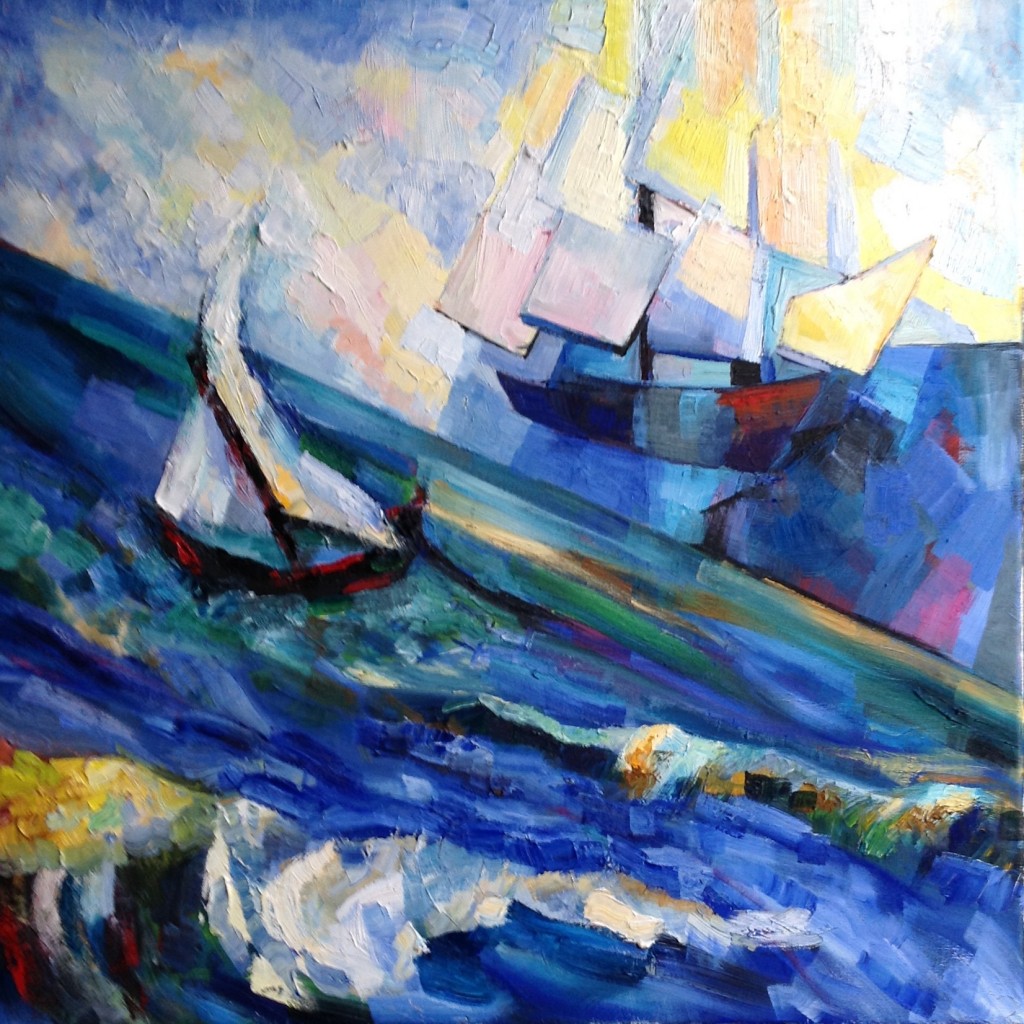 I didn’t really know what to expect in the studio today: was the yesterday’s breakthrough real — will it survive the next morning, or will I be pushed right back to the struggle and despair?
I didn’t really know what to expect in the studio today: was the yesterday’s breakthrough real — will it survive the next morning, or will I be pushed right back to the struggle and despair?
I so wanted to finally bring to completion both 79 and 80 — I felt that today was the day; that was the intention I brought to the studio. I didn’t touch 79, which is probably to the better; the whole trio that begins this sixteen-sonnets composition should be left alone for now, till the final integration of the whole composition. But I believe I did complete the 80 — brought it to this stage where I want to let it rest for a few months, while I work my way through the next ones.
It was a good day, “in the flow” kind of day. For me, it rarely happens on the days of “final touches” — the final brushstrokes that bring a painting to its completion, the final decisions. When it does happen, it’s because the whole process is a single experience of flow, when the painting has started to “sing” the sonnet back to me somewhen early in the process. Then, it all happens easily, organically — you just do what the painting asks you to. But I couldn’t expect anything like this today — not after these months of hopeless struggle against I don’t even know what.
And yet, it was a good day; spent in harmony with the sonnet, and with the painting. The strength of sonnet-like response from the painting was not as clear as it sometimes is, but it was there, and the despair — which is, after all, there in the text — was finally refined, distilled fully into painting. It has become beautiful — not dangerous and murderous anymore.
Somewhere in the midst of the painting sessions I caught these words in my head: “Find the rhythms of the universe”. The rhythmical structure of the sonnet finally found its way into the painting today; the rhythmical contrast between the tonal themes of “my saucy boat” versus “his of tall standing and of goodly pride”. This contrast was always supposed to be there, enacted through the difference between two parts of the painting (the lower and the higher), but now it seems to have found a more straightforward expression — with strengthening of the vertical movement from within the “proud” boat up, opening the composition upwards in the right top corner, and partly closing it on the left with darkening of the sky.
The painting is saved, I think — for now at least. And I seem to be out of this void of despair — survived, once again. As I was editing the journal entry from yesterday, I understood that I was still “hiding” from myself the most obvious source of this despair — Shakespeare, the sonnet itself. The process does require going deep into the “mood” of the sonnet, so I could paint from that place. And I do that, but I don’t always acknowledge it to myself; I allow myself to forget that it’s not “my” despair, and so it becomes mine.
This despair-to-be-painted should be experienced fully, but witnessed in a different way. It’s not a guarantee from falling into a depression-like state of mind, but at least a chance. To be both the experiencer and the witness simultaneously. That’s the key to the connection between the sonnets series and the “problem of consciousness” in general.